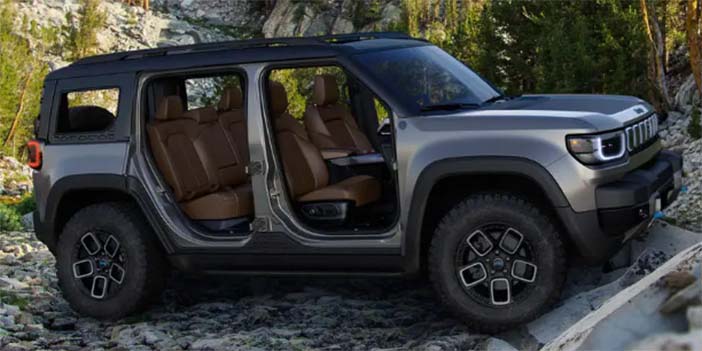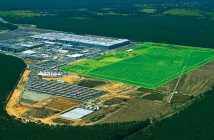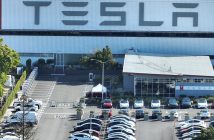+++ The new BMW M5 , the longtime super sedan that will pull a Touring version as well, will feature the hybrid setup from the XM. In the hottest version of this SUV, the so-called Label Red, the twin-turbocharged 3.0-liter inline-6 and an electric motor combine to produce 748 horsepower and 1.000 Nm of torque. In the M5, I’m told the paring will make a combined 727 horsepower and 1.020 Nm. These figures generously up the ante from the previous-gen M5’s 600 hp and 720 Nm. Next up are dimensions, which are said to grow by 3.5 centimeters in length and 7 centimeters in width, with wheelbase stretched slightly to make room for the new M5’s suspension setup. The price buyers will pay for what is certain to be titanic performance could be a curb weight pegged at 2.435 kilos. That’s about 500 kilos more than the previous M5 and 450 kilos more than the 540i xDrive. This weight is also more than BMW’s weight of 2.380 kilos for the battery-electric i5 M60, which would be the biggest potential shock. No matter where the scale lands, the M5’s wheels and tires will expand a tad so as to hustle that heft, going from the 275/40 front and 285/40 rear tires on the last M5’s 19-inch wheels to a staggered setup of 285/40 tires on 20-inch front wheels and 295/35 tires on 21-inch rear wheels. So the M in M5 could stand for “Mega” in an entirely new way. Though that can apply to the M5’s German competition, too. The Porsche Panamera Turbo E-Hybrid throws a combined 680 hp and 930 Nm to rollick its 2.435 kilos curb weight. The Mercedes-AMG GT 4-Door in S E-Performance guise makes 843 hp / 1.470 Nm and weighs 2.380 kilos. This means we might be entering an era where an AMG is the lightest of the Germans, with the best power-to-weight ratio. The new M5 sedan is said to enter production in July and the Touring in November. +++
+++ FISKER has been floating in the danger zone, teetering on the brink of complete collapse, for months now. That state of limbo looks dramatic from a business standpoint, but the impact on Fisker owners is coming into clearer focus. A recent story from an early Fisker Ocean buyer highlighted the challenges faced by people who bought into the upstart brand, as a simple door ding turned into a nightmare. Someone hit Joy Wanner’s Ocean, causing minor damage to its door. While that would be an annoying but straightforward fix for most cars, Fisker’s state of near-collapse made the process a real headache. A few weeks after the incident, Wanner’s insurance company totaled the Ocean, though the damage only amounted to a small surface crease and a broken door hinge, with a total cost of just $910. The insurance adjuster admitted that the total could be much higher, though, as he was completely unfamiliar with the brand and its vehicles. Though she was initially excited to invest in Fisker and its admittedly good-looking EV, the experience soured Wanner on new car companies for good. She told: “It was an emotional rollercoaster. One day it would run fine, but the next day, a new warning light would blink or ding. It was so frustrating to pay that much money for a car, only to get annoyed every time you used it”. Adding salt to Wanner’s wounds, she also experienced many of the issues other Fisker owners reported. She hadn’t received a title from the automaker and said it was impossible to get any answers or help. The insurance company ultimately paid out $53.303 for the Ocean, but that paled in comparison to the price Wanner paid for the hassle of owning the SUV. “We lost over $20.000 investing in this startup EV and I cannot say goodbye fast enough”, she said. “The delivery delays, mismanagement of paperwork, reporting issues, and getting case numbers that disappear into thin air, the mysterious warning lights and maddening warning sounds, being trapped inside the vehicle, an unreliable outdated navigation system, one cheaply made (and barely operational) key fob: This vehicle fell very, very short of our expectations and well below my high standards. I hope Henrik Fisker loses every dime he has, and I wish the rest of you the best of luck”. +++
+++ Take it from someone who has done even just a small amount of automotive paint work, it’s a time consuming process and thus one that can be pricey to do right. As such, you want to avoid problems with it, from paint that easily chips to clearcoats that start peeling, because it’s a pain to fix. Consumer product testing and advising publication Consumer Reports tracks issues with paint as part of its vehicle surveys, and it ranked the 10 vehicles with the most paint problems. Some of them are sold in Europe too, so you have an idea of what models to be particularly wary of. They’re: the FORD Explorer, the Tesla Model X, the FORD Mustang and the Mercedes-Benz GLK-Class. +++
+++ The JEEP RECON off-roader could be offered with a hybrid powertrain as well as an electric one when it arrives in 2025, according to new brand boss Antonio Filosa. The Land Rover Defender rival was revealed in concept form as an electric sibling to the fabled Wrangler, which is currently offered with petrol and plug-in hybrid powertrains. As with the Wrangler, the Recon will be engineered to offer considerable off-road ability and feature removable doors, together with around 600 hp and a range of 600 km. The Recon will arrive at a similar time to the Wagoneer S, a luxury flagship with a more road-going focus. Both were previewed as bespoke electric cars based on Stellantis’s STLA Large platform. Asked whether the slowdown in electric car sales could prompt ICE versions of the Wagoneer S and Recon, Filosa said: “So far, our plan is BEV only”. But he added: “The Wagoneer S will stay BEV-only, for sure. But while being faithful to our main strategy of deep electrification, we can think about opportunities on the Recon since it will be built on a platform that is very versatile”. Filosa said it was unlikely that the Recon would be offered with a pure-petrol engine, hinting that any ICE-equipped model would likely be a hybrid. He added: “We are just studying the development on the Recon and analyzing if there are options for the future, but so far it’s BEV”. Filosa reiterated Stellantis’s commitment to its current electrification strategy, with the goal of electric cars accounting for 100% of sales in Europe, 50% in the US and 20% in South America by 2030. “We are very versatile in our platforms, and while many of our competitors are only strong in one continent, we are strong in the rest of the world”, he said, highlighting that Brazil (which is focusing on ethanol fuel) is Jeep’s second largest market behind the US. “To keep our strengths in those regions, we need to invest in other possibilities than electric, and since we have those investments running, we can adopt them immediately for other regions. But our strategy is going 100% electric in Europe. If the political leaders of Europe decide differently, then we will need to adapt, and we will adapt very fast”. +++

+++ Witnessing the sheer violence of a crash test in a closed facility for the first time is a sobering experience. The colossal energy release and the noise it makes last only a second, but they’re followed by an eerie silence that makes the experience even more shocking. Crash testing is something that car makers spend millions on doing, and techniques for understanding what happens to a car’s structure and the dummies inside it are continually being improved. In the past year, MERCEDES-BENZ has become the first maker to subject 2 electric cars to a crash test with one another and the first to X-ray a crashing car at the moment of impact. The X-ray test took place at the Ernst Mach Institute in Freiburg, Germany, using a C-Class saloon and a linear accelerator as the X-ray camera. It was a side impact test, meaning the car remained stationary while a heavy barrier was slammed into it at 60 kph. In the seat closest to the impact (on the left) sat a SID II dummy, which is specially designed both for side impact tests and to represent the female body. In Mercedes’ system, the X-ray images are made by a linear accelerator working at a high frequency of 1kHz, looking down on the car from above. A flat detector below the car acts as a digital receiver, generating an electrical signal when it’s hit by the X-rays. As the X-rays pass through the car’s structure and the dummy, they’re absorbed to a greater or lesser extent by the materials, so the intensity varies across the plate, which in turn generates the varying tones to create a black and white image. The end result is similar to that of a hospital X-ray machine or an airport luggage scanner. The duration of the X-ray pulse is just a few microseconds, so it can record still images of the deforming structure without any blurring due to movement. But because the linear accelerator generates a continuous stream of X-ray pulses, it can generate up to 1000 images per second. In the few milliseconds of impact, it can shoot about 100 still images, which can be viewed individually or combined into a video. The results give an accurate insight into what happens to the car in a crash and also to the dummy. It gives investigators a detailed insight, for example, into how the thorax of the dummy is compressed in a side impact or exactly how a component of the car’s structure deforms. The X-ray system doesn’t affect any of the other analysis tools, such as the conventional cameras mounted inside the car, and the facility has been adapted to ensure that no staff or anyone external are exposed to potentially harmful radiation. Dosimeters monitor radiation levels and, just in case, physical protection measures include a 40cm-thick concrete wall around the building, along with a 45-tonne protection door at the entrance of the German government-approved plant. +++
+++ TESLA ousted 2 key executives and laid off the 500 staff members who supported the operations of its Supercharger EV charging network. CEO Elon Musk cited falling sales and impatience with the overall progress in headcount reduction as the primary drivers behind the cuts and suggested that more will follow, warning his executives to take headcount reduction measures seriously. Rebecca Tinucci, senior director of the electric vehicle maker’s Supercharger business, and Daniel Ho, head of the new vehicles program, are both out. Musk also plans to dismiss everyone working for Tinucci and Ho, including the roughly 500 employees who work in the Supercharger group. The Supercharger layoffs stand out as particularly surprising, because the Supercharger network is widely regarded as a key advantage for Tesla over its competition: as of January, Tesla had built 6.249 Supercharger stations with 57.579 chargers. Tesla’s public policy team, which was led by former executive Rohan Patel, will also be dissolved. Per Musk, Tesla needs to remain “absolutely hard core” about managing headcount and costs and said the cuts should serve as a warning to anybody on staff who isn’t taking the initiatives seriously. Tesla had 140.473 employees globally as of end-2023. Ho joined Tesla in 2013 and served as program manager on Model S, the Model 3 and the Model Y before being put in charge of all new vehicles. Tinucci joined in 2018. Two other leaders (Patel and battery development chief Drew Baglino) announced their departures earlier this month, when Tesla also ordered the layoffs of more than 10% of its workforce. Shortly after news broke that Tesla would be laying off another round of employees, including the team behind the company’s Supercharging network, Musk took to social media to reassure owners and investors that the charging stations aren’t going anywhere. “Tesla still plans to grow the Supercharger network, just at a slower pace for new locations and more focus on 100% uptime and expansion of existing locations”, Musk wrote in a post on X. Despite Musk’s assurances, Tesla has already begun pulling out of leases for upcoming stations in New York. Even the most die-hard Tesla fans were disheartened by the news. Commenters were quick to call Musk’s announcement “kinda lame” and urged him to reconsider, arguing that a large charging network is key to promoting widespread adoption of electric vehicles nationwide. “This is a goddamn disaster. Superchargers need to be Tesla’s second top growing sector outside of FSD”, Troy Meekhof, who runs the site The Cybertruck Guy, which covers the Cybertruck and other EVs, wrote in response to Musk’s post. “You’re opening up the network to practically every EV driver on the continent without building with urgency? I’m honestly floored at this decision”. Meekhof told that, as an owner of 2 Tesla vehicles, he’s very familiar with Superchargers and called them “damn near magical”, saying they work every time without fail and the stations he visits are rarely full. However, he said, entire sections of the country and his home state of Michigan are completely off-limits to him and his vehicles “simply because of the lack of charging options”. “I’m generally apt to trust Musk’s maniacal whims because they’re indicative of a more complex longer-term plan, but destroying the division responsible for what I believe is their single greatest achievement in North America is simultaneously shocking and bewildering”, Meekhof told, adding he’s “certainly looking forward to seeing what this broader plan is, but at face value, I’m alarmed”. +++
+++ TOYOTA is planning to offer an electric Highlander in the near future. The company has pledged $1.4 billion to the Princeton, Indiana plant that builds the current Highlander, the Grand Highlander and the Lexus TX that’s the luxury arm’s version of the Grand Highlander. The money will pay for 3 items at Toyota Motor Manufacturing Indiana (TMMI), the first being the assembly of “an EV on the line that now builds the Highlander”, beginning in 2026. A Toyota executive told that the EV in question would be “chassis-based,” excluding the use of a skateboard architecture. The second thing the money pays for is a battery pack assembly line. Cells will come from Toyota Battery Manufacturing North Carolina, a joint venture with Toyota’s longtime partner Panasonic, expected to begin production in 2025. A Toyota representative told that there’d be no change to the vehicle nameplates for the moment and the new vehicle doesn’t require raising the capacity of the line it will be built on. The automaker says production capacity at Princeton is more than 420.000 vehicles per year. None of this confirms an electric Highlander on the market sometime around the 2026 model year, but it rules out anything from the new generation of EVs Toyota’s been teasing and hinting at for a few years now. If and when the electric Highlander appears, it is expected to be followed by a Lexus TZ, the automaker already having applied to trademark TZ 450e and TZ 550e. Whatever is coming out of Indiana is separate from the new electric vehicle Toyota’s going to build at its Georgetown plant. That vehicle will be called the BZ5X: a 3-row electric SUV smaller than the electric Highlander disgorged from Princeton. This plant will also build its own packs, but the cells for these packs are reportedly coming from a new plant LG Energy Systems is building in Michigan. Toyota recently contributed $3 billion to expand that facility to secure 250 gigawatt-hours’ worth of cells annually, said to be enough for about 250.000 EVs. That facility is also due online in 2025. +++



